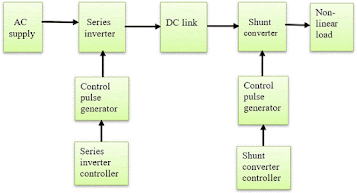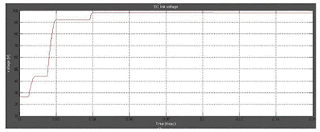ABSTRACT:
Increasing demands for power supplies have contributed
to the population of high frequency ac (HFAC) power distribution system (PDS),
and in order to increase the power capacity, multilevel inverters (MLIs)
frequently serving as the high-frequency (HF) source-stage have obtained a
prominent development. Existing MLIs commonly use more than one voltage source
or a great number of power devices to enlarge the level numbers, and HF
modulation (HFM) methods are usually adopted to decrease the total harmonic
distortion (THD). All of these have increased the complexity and decreased the
efficiency for the conversion from dc to HF ac. In this paper, a nine-level inverter
employing only one input source and fewer components is proposed for HFAC PDS.
It makes full use of the conversion of series and parallel connections of one voltage
source and two capacitors to realize nine output levels, thus lower THD can be obtained
without HFM methods. The voltage stress on power devices is relatively
relieved, which has broadened its range of applications as well. Moreover,
proposed nine-level inverter is equipped with the inherent self-voltage
balancing ability, thus the modulation algorithm gets simplified. The circuit
structure, modulation method, capacitor calculation, loss analysis and performance
comparisons are presented in this paper, and all the superior performances of
proposed nine-level inverter are verified by simulation and experimental
prototypes with rated output power of 200W. The accordance of theoretical
analysis, simulation and experimental results confirms the feasibility of proposed
nine-level inverter.
KEYWORDS:
1.
Nine-level inverter
2.
One voltage
source
3.
Two capacitors
4.
Self-voltage
balancing
SOFTWARE: MATLAB/SIMULINK
BLOCK DIAGRAM:
Fig. 1. Circuit of proposed nine-level inverter.
EXPECTED SIMULATION
RESULTS:
Fig. 2. Simulation waveforms of driving signals.
Fig. 3. Simulation waveforms of output voltages and currents under different load-types. (a) Ro = 32 . (b) ZL = 24+j20 Ro =24 Lo = 3.2 mHL31.2= 40.
Fig. 4. Simulation waveforms of the staircase output and capacitors’ voltages.
Fig. 5. Simulation waveform of frequency spectrum at fundamental frequency of 1 kHz.
CONCLUSION:
REFERENCES:
[1]
J. Drobnik, “High frequency alternating current power distribution,” Proceedings
of IEEE INTELEC, pp. 292-296, 1994.
[2]
P. Jain, H. Pinheiro, “Hybrid high frequency AC power distribution architecture
for telecommunication systems,” IEEE Trans. Power Electron., vol. 4,
no.3, Jan. 1999.
[3]
B. K. Bose, M.-H. Kin and M. D. Kankam, “High frequency AC vs. DC
distribution
system for next generation hybrid electric vehicle,” in Proc. IEEE Int.
Conf. Ind. Electron., Control, Instrum, (IECON), Aug. 5-10, 1996, vol.2,
pp. 706-712.
[4]
S. Chakraborty and M. G. Simões, “Experimental Evaluation of Active Filtering
in a Single-Phase High-Frequency AC Microgrid,” IEEE Trans. Energy Convers.,
vol. 24, no. 3, pp. 673-682, Sept. 2009.
[5]
R. Strzelecki and G. Benysek, Power Electronics in Smart Electrical Energy
Networks. London, U.K., Springer-Verlag, 2008.





























